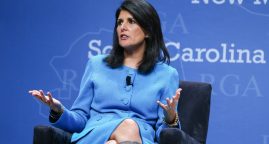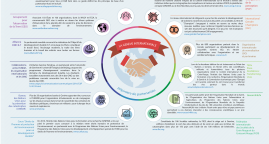Moscow-Washington, Eurasian issues of the Syrian crisis
Recent developments indicate deep antagonisms that are beyond the regional framework.
Peace talks on Syria in Geneva resumed April 11 in a context modified by rising tensions between Russians and Americans. If the convergence of the two actors had enabled the adoption of the 2253 resolution on Syria of 18 December 2015 laying down the timetable for the political transition, the signs of stiffening since late March in the Washington position is increasingly palpable. Three days after officially expressed their opposition to the proposal made by Syrian President Bashar Assad to form a national unity government, the United States announced the resumption of the training program and training tens of rebels “under a different form “of the one launched early 2015 and whose bitter failure led to its suspension last October. The latest US statements tend to support the idea that the premises of a US-Russian agreement on Syria, following which intervened partial military withdrawal from Moscow, concern other issues that go well beyond the regional framework as the nuclear issue and energy security in the Eurasian area.
Strengthening NATO device
On this point, the editorial US President Barack Obama “How we can make our vision of a world without nuclear weapons a reality” appeared in columns of the Washington Post last March 30 on the eve of the 4th summit on nuclear security in Washington is unambiguous and reflects the real issues of the Russian-American confrontation.
In this editorial, Barack Obama called Moscow to reduce its nuclear potential presented as the main risk factor threatening the security of Europe. In turn, Sunday, the secretary general of NATO, Jens Stoltenberg, presented the military build alliance in Europe as a new form of deterrence against “Russian aggression.” According to Mr. Stoltenberg, “when all this will combine with US forces were already deployed in Europe – very important also – we will be in position to quickly create, by 2017, a land force of arms combined particularly exercised and who will be able to track whether this is necessary within the framework of this theater. ” This decision is a further illustration of the US strategy of offensive pivot in East Asia announced as the priority of the Obama administration in 2011. It took shape in 2004 with the expansion of NATO eastward to strengthen Moscow’s destabilizing potential in its traditional area of influence and contain the geopolitical ambitions of Russia in Eurasia, at a time when it was however confined to a defensive strategic position.
From Balkan to Philippines
This is in light of these global strategic considerations that understands the ambivalence of the United States in their handling of the crisis in Syria and the questioning of the beginning of Russian-American agreement including the possibility of trading on other components. The hardening of US positions and the announcement of a military reinforcement of NATO, which is in the wake of a series of measures ranging from the opening of logistics centers in the delivery of military equipment and aircraft hunting in the Baltic countries through the deployment of Baltic naval vessels shows that Washington is incapable of rethinking the strategic framework of its relations with Russia to contain the rise of China. The perception of a Russian peril that threatens US interests was strengthened with the return of Russia on the international scene and conducting an ambitious power that results in a change of power relations whose effects are already noticeable in the Middle East. Although the strategic repositioning in the East today is the fundamental strategic priority of Americans, consistency appears largely absent from their policy in the Middle East. In Syria, the United States adopt a piecemeal approach.
After the clear failure of the coalition to eradicate the Islamic State, the fiasco of rebel training program to strengthen moderate groups at the expense of jihadist groups supported notably by Saudi ally, a bet on the Kurdish opposition referred by Turkish ally and a point of convergence with the Russians to promote a political solution in Geneva, the Americans finally backtrack. Anxious to focus on China, they reinvest Iraq to prevent the placing sectional Iran. Worried a strategic partnership between Moscow and Beijing, they interfere in crises from the Balkans to the Philippines. But power politics carried on a long-term strategic vision would have pushed Washington to ease tensions with Moscow to play oppositions in the Sino-Russian relationship and adapt to the new global geopolitical order, but on this point, representations US remain frozen. Increase the presence of American tanks on European soil stressing the importance of NATO, “pillar” of US defense policy, as did President Obama yesterday, can only lead to prolonged seizures.
Translante from the french.
Read the article (in french) on the L’Orient-Le Jour website
Related Articles
Speech of the Grand Master to the Diplomatic Corps accredited to the Sovereign Order of Malta
08/01/2019. The Grand Master, Fra’ Giacomo Dalla Torre del Tempio di Sanguinetto, received today the Diplomatic Corps accredited to the Sovereign Order of Malta for the traditional audience of the beginning of the new year.
A Conversation With Nikki Haley
03/30/2017. The Ambassador discusses the United States’ goals for its term as president of the UN Security Council in April, and outlines her plans to highlight human rights and to assess current UN peacekeeping missions.
Partnerships Pave the Way for our Collective Roadmap
01/18/2017. Showing remarkable consensus in a period of uncertainty and of questioning the multilateral system, last year our global leaders adopted the most ambitious set of new policy frameworks that form our collective roadmap for the future.






